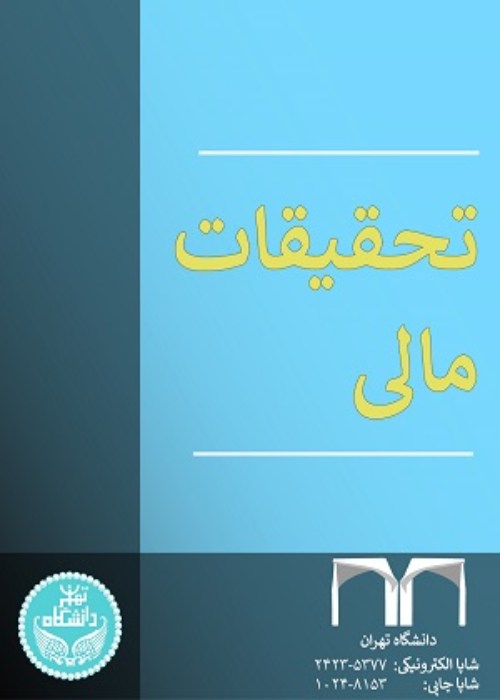Designing a Model for Credit Risk Assessment of Customers for Guarantees Issued by the Export Guarantee Fund of Iran via Artificial Neural Network Model
One of the most important risks faced by financial institutions is credit risk, which is formed by the possibility of the receiver's default in repaying the loan or repaying the loan on time. One of the pivotal financial institutions in Iran's economy is the Export Guarantee Fund of Iran. Being the exclusive official export credit insurance entity in Iran, it operates under complete government ownership, shouldering all obligations associated with the fund's coverage. Over the past decade, the Export Guarantee Fund of Iran, the sole provider of export guarantees in the Iranian economy, has undertaken the risk amounting to approximately $15.8 billion through the issuance of diverse guarantees and insurance policies. The most significant volume of claims pertains to credit guarantees. Based on available statistics and official records within the Iranian entity, it can be observed that between the Iranian calendar years of 1387 and 1397, this fund issued guarantees totaling $6.7 billion, with the largest claim, exceeding $317 million, originating from the credit guarantees provided for the benefit of creditors. Recognizing the significance of this matter, the development of an optimal model for evaluating the credit guarantees provided by customers of the Export Guarantee Fund of Iran holds the potential to mitigate credit risk and subsequently decrease the fund's incurred losses. Even a one percent reduction in the fund's losses could result in substantial savings, amounting to at least 1,330 billion Rials. This figure is poised to grow even further as the fund increases the issuance of credit guarantees. Consequently, the primary objective of this research is to identify the most effective method for distinguishing between creditworthy and high-risk customers, ultimately diminishing the default rate of loans extended by the Export Guarantee Fund of Iran.
In this study, an artificial neural network model was employed to create a risk assessment framework for applicants seeking financial facilities and guarantees from this fund. This model exhibits exceptional predictive capabilities, especially in estimating the likelihood of default for the granted facilities. To achieve this objective, a dataset comprising 2,170 credit files granted by this fund was utilized. A total of 69 intra-organizational and extra-organizational variables were initially considered, and their respective information was gathered. Subsequently, six key variables were employed in the ultimate neural network model, encompassing the credit recipient's province, the guarantee beneficiary (creditor bank), personnel count, current ratio, real interest rate, and economic growth rate.
Based on the neural network model, the best models were extracted with three methods Bayesian, Levenberg, and Conjugate Gradient, and with one to 30 neurons in the hidden layer. The best model with all independent variables (i.e., 69 independent variables) was predicted with 96.2% accuracy, which is more than the Probit econometric model.
The findings of this research offer the capability to distinguish between customers with favorable and unfavorable credit profiles. Furthermore, the credit rating of customers can be used as a basis for adjusting the collateral requirements for each customer group, thereby aligning the collateral amount with the creditworthiness of the respective groups. This means that if the customer is one of the customers with good credit and a good credit rating, less collateral can be obtained from them, and if the customer has higher credit risk, more collateral can be used as a guarantee of the repayment obligation. In this case, while measuring the credit risk and separating customers, it is possible to manage the risk and the credit portfolio of the Export Guarantee Fund of Iran optimally.
- حق عضویت دریافتی صرف حمایت از نشریات عضو و نگهداری، تکمیل و توسعه مگیران میشود.
- پرداخت حق اشتراک و دانلود مقالات اجازه بازنشر آن در سایر رسانههای چاپی و دیجیتال را به کاربر نمیدهد.


